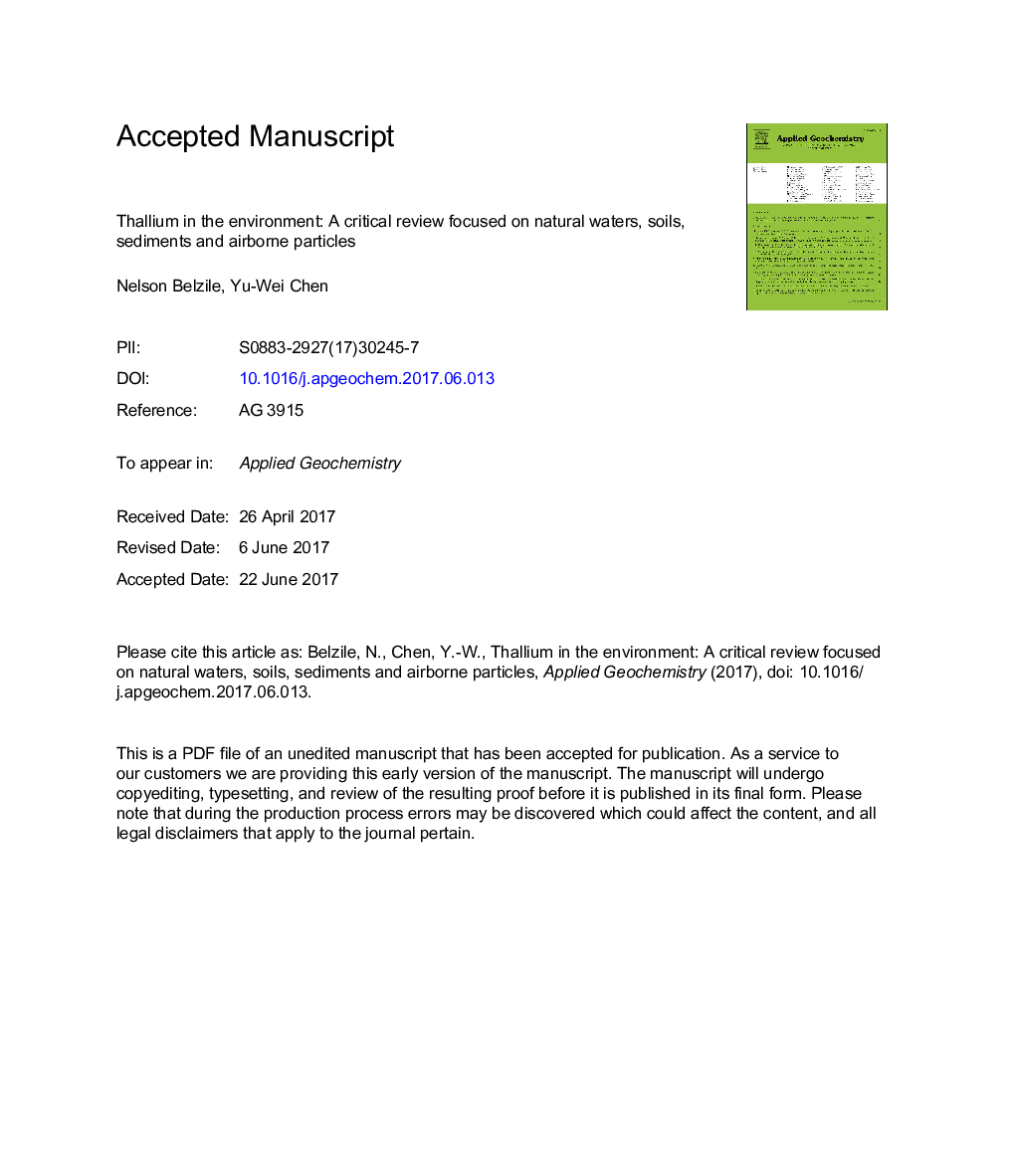| Article ID | Journal | Published Year | Pages | File Type |
|---|---|---|---|---|
| 5752525 | Applied Geochemistry | 2017 | 69 Pages |
Abstract
Thallium is a non essential and highly toxic metal listed by USEPA and the European Water Framework Directive as a priority pollutant. It is present in the environment mainly as Tl(I) and Tl(III) usually at very low concentrations, which makes it a challenging element requiring high sensitive instrumental techniques to measure it in complex matrices. The average concentration of thallium in the Earth's crust is generally below 1 ppm and its geochemical behaviour and mobility is often compared to that of potassium. In non-contaminated freshwater, the thallium concentration is generally below 1 μg/L and rarely exceeds 20 ng/L in the open ocean. The affinity of thallium for iron and manganese oxyhydroxides is often observed in soil and sediment where its concentrations normally remain in the low ppm except for mine and contaminated areas. Thallium is present at low ng/m3 in aerosols and air particulates but can increase to higher levels in highly urbanized areas and in mining and industrialized zones. For this review, more than 285 papers containing information of thallium in natural waters, soils, sediments and air particulates have been consulted but only a low number of them present information on the speciation of the metal.
Related Topics
Physical Sciences and Engineering
Earth and Planetary Sciences
Geochemistry and Petrology
Authors
Nelson Belzile, Yu-Wei Chen,
